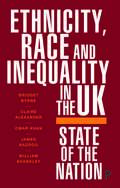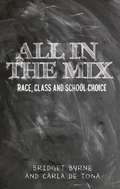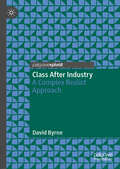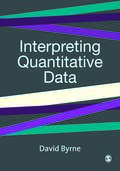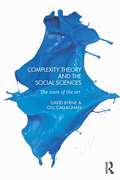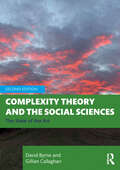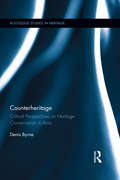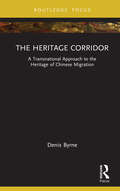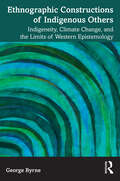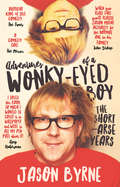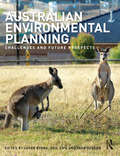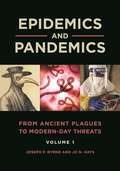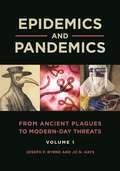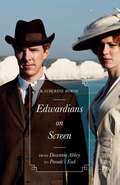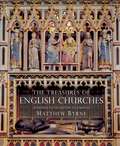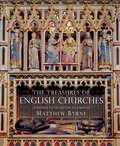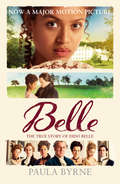- Table View
- List View
Ethnicity and Race in the UK: State of the Nation
by Bridget Byrne Claire AlexanderAvailable Open Access under CC-BY-NC licence. 50 years after the establishment of the Runnymede Trust and the Race Relations Act of 1968 which sought to end discrimination in public life, this accessible book provides commentary by some of the UK’s foremost scholars of race and ethnicity on data relating to a wide range of sectors of society, including employment, health, education, criminal justice, housing and representation in the arts and media. It explores what progress has been made, identifies those areas where inequalities remain stubbornly resistant to change, and asks how our thinking around race and ethnicity has changed in an era of Islamophobia, Brexit and an increasingly diverse population.
Ethnicity and Race in the UK: State of the Nation
by Bridget Byrne Claire AlexanderAvailable Open Access under CC-BY-NC licence. 50 years after the establishment of the Runnymede Trust and the Race Relations Act of 1968 which sought to end discrimination in public life, this accessible book provides commentary by some of the UK’s foremost scholars of race and ethnicity on data relating to a wide range of sectors of society, including employment, health, education, criminal justice, housing and representation in the arts and media. It explores what progress has been made, identifies those areas where inequalities remain stubbornly resistant to change, and asks how our thinking around race and ethnicity has changed in an era of Islamophobia, Brexit and an increasingly diverse population.
All in the mix: Race, class and school choice
by Bridget Byrne Carla De TonaAll in the mix: Race, class and school choice considers how parents choose secondary schools for their children and makes an important intervention into debates on school choice and education. The book examines how parents talk about race, religion and class in the process of choosing. It also explores how parents’ own racialised and classed positions, as well as their experience of education, can shape the way they approach choosing schools. Based on in-depth interviews with parents from different class and racialised backgrounds in three areas in and around Manchester, the book shows how discussions about school choice are shaped by the places in which the choices are made. It argues that careful consideration of choosing schools opens up a moment to explore the ways in which people imagine themselves, their children and others in social, relational space.
Class After Industry: A Complex Realist Approach
by David ByrneThe transition to twenty-first century post-industrial capitalism from the ‘welfare’ industrial capitalism of the twentieth century, has affected the ways in which class is lived in terms of relational inequality and the factors that structure identity. Class After Industry takes a complex realist approach to the dynamics of individual lives, places, the social structure and analyses their significance in terms of class. A wide range of quantitative and qualitative studies are drawn on to explore how ‘life after industry’ shapes class, and the consequent potential for social change. The book will be of interest across the social sciences and beyond, to those concerned with how class forms might translate into political action.
Interpreting Quantitative Data
by David ByrneHow do quantitative methods help us to acquire knowledge of the real world? What are the `do's' and `don'ts' of effective quantitative research? This refreshing and accessible book provides students with a novel and useful resource for doing quantitative research. It offers students a guide on how to: interpret the complex reality of the social world; achieve effective measurement; understand the use of official statistics; use social surveys; understand probability and quantitative reasoning; interpret measurements; apply linear modelling; understand simulation and neural nets; and integrate quantitative and qualitative modelling in the research process. Jargon-free and written with the needs of students in mind, the book will be required reading for students interested in using quantitative research methods.
Interpreting Quantitative Data (PDF)
by David ByrneHow do quantitative methods help us to acquire knowledge of the real world? What are the `do's' and `don'ts' of effective quantitative research? This refreshing and accessible book provides students with a novel and useful resource for doing quantitative research. It offers students a guide on how to: interpret the complex reality of the social world; achieve effective measurement; understand the use of official statistics; use social surveys; understand probability and quantitative reasoning; interpret measurements; apply linear modelling; understand simulation and neural nets; and integrate quantitative and qualitative modelling in the research process. Jargon-free and written with the needs of students in mind, the book will be required reading for students interested in using quantitative research methods.
Complexity Theory and the Social Sciences: The state of the art
by David Byrne Gillian CallaghanFor the past two decades, ‘complexity’ has informed a range of work across the social sciences. There are diverse schools of complexity thinking, and authors have used these ideas in a multiplicity of ways, from health inequalities to the organization of large scale firms. Some understand complexity as emergence from the rule-based interactions of simple agents and explore it through agent-based modelling. Others argue against such ‘restricted complexity’ and for the development of case-based narratives deploying a much wider set of approaches and techniques. Major social theorists have been reinterpreted through a complexity lens and the whole methodological programme of the social sciences has been recast in complexity terms. In four parts, this book seeks to establish ‘the state of the art’ of complexity-informed social science as it stands now, examining: the key issues in complexity theory the implications of complexity theory for social theory the methodology and methods of complexity theory complexity within disciplines and fields. It also points ways forward towards a complexity-informed social science for the twenty-first century, investigating the argument for a post-disciplinary, ‘open’ social science. Byrne and Callaghan consider how this might be developed as a programme of teaching and research within social science. This book will be particularly relevant for, and interesting to, students and scholars of social research methods, social theory, business and organization studies, health, education, urban studies and development studies.
Complexity Theory and the Social Sciences: The state of the art
by David Byrne Gillian CallaghanFor the past two decades, ‘complexity’ has informed a range of work across the social sciences. There are diverse schools of complexity thinking, and authors have used these ideas in a multiplicity of ways, from health inequalities to the organization of large scale firms. Some understand complexity as emergence from the rule-based interactions of simple agents and explore it through agent-based modelling. Others argue against such ‘restricted complexity’ and for the development of case-based narratives deploying a much wider set of approaches and techniques. Major social theorists have been reinterpreted through a complexity lens and the whole methodological programme of the social sciences has been recast in complexity terms. In four parts, this book seeks to establish ‘the state of the art’ of complexity-informed social science as it stands now, examining: the key issues in complexity theory the implications of complexity theory for social theory the methodology and methods of complexity theory complexity within disciplines and fields. It also points ways forward towards a complexity-informed social science for the twenty-first century, investigating the argument for a post-disciplinary, ‘open’ social science. Byrne and Callaghan consider how this might be developed as a programme of teaching and research within social science. This book will be particularly relevant for, and interesting to, students and scholars of social research methods, social theory, business and organization studies, health, education, urban studies and development studies.
Complexity Theory and the Social Sciences: The State of the Art
by David Byrne Gillian CallaghanThis expanded and updated edition of Complexity Theory and the Social Sciences: The State of the Art revisits the use of complexity theory across the social sciences and demonstrates how complexity informs approaches to various contemporary issues in the context of the COVID-19 pandemic, widening social inequality, and impending social and ecological catastrophe wrought by global warming. The book reviews complexity theory in the practice of the social sciences and at their interface with ecological science. It outlines how social theory can be reconciled with complexity thinking and presents a review of the way research can be done using complexity theory. The book suggests how complexity theory can be used to understand and evaluate governance processes, particularly with regard to social inequality and the climate crisis. The impact of the COVID-19 pandemic is also examined through a complexity lens, reviewing how complexity thinking has been employed in relation to the pandemic and how implementing a complexity framework can transform health and social care. The book concludes with a call to action and the use of complexity theory to inform critical thinking in the education system. This textbook will be immensely useful to students and researchers interested in social research methods, social theory, business and organization studies, health, education, urban studies, and development studies.
Complexity Theory and the Social Sciences: The State of the Art
by David Byrne Gillian CallaghanThis expanded and updated edition of Complexity Theory and the Social Sciences: The State of the Art revisits the use of complexity theory across the social sciences and demonstrates how complexity informs approaches to various contemporary issues in the context of the COVID-19 pandemic, widening social inequality, and impending social and ecological catastrophe wrought by global warming. The book reviews complexity theory in the practice of the social sciences and at their interface with ecological science. It outlines how social theory can be reconciled with complexity thinking and presents a review of the way research can be done using complexity theory. The book suggests how complexity theory can be used to understand and evaluate governance processes, particularly with regard to social inequality and the climate crisis. The impact of the COVID-19 pandemic is also examined through a complexity lens, reviewing how complexity thinking has been employed in relation to the pandemic and how implementing a complexity framework can transform health and social care. The book concludes with a call to action and the use of complexity theory to inform critical thinking in the education system. This textbook will be immensely useful to students and researchers interested in social research methods, social theory, business and organization studies, health, education, urban studies, and development studies.
Counterheritage: Critical Perspectives on Heritage Conservation in Asia
by Denis ByrneThe claim that heritage practice in Asia is Eurocentric may be well-founded, but the view that local people in Asia need to be educated by heritage practitioners and governments to properly conserve their heritage distracts from the responsibility of educating oneself about the local-popular beliefs and practices which constitute the bedrock of most people’s engagement with the material past. Written by an archaeologist who has long had one foot in the field of heritage practice and another in the academic camp of archaeology and heritage studies, Counterheritage is at once a forthright critique of current heritage practice in the Asian arena and a contribution to this project of self-education. Popular religion in Asia – including popular Buddhism and Islam, folk Catholicism, and Chinese deity cults – has a constituency that accounts for a majority of Asia’s population, making its exclusion from heritage processes an issue of social justice, but more pragmatically it explains why many heritage conservation programs fail to gain local traction. This book describes how the tenets of popular religion affect building and renovation practices and describes how modernist attempts to suppress popular religion in Asia in the early and mid-twentieth century impacted religious ‘heritage.’ Author Denis Byrne argues that the campaign by archaeologists and heritage professionals against the private collecting and ‘looting’ of antiquities in Asia largely ignores the regimes of value which heritage discourse has helped erect and into which collectors and local diggers play. Focussing on the Philippines, Thailand, and Taiwan but also referencing China and other parts of Southeast Asia, richly detailed portraits are provided of the way people live with ‘old things’ and are affected by them. Narratives of the author’s fieldwork are woven into arguments built upon an extensive and penetrating reading of the historical and anthropological literature. The critical stance embodied in the title ‘counterheritage’ is balanced by the optimism of the book’s vision of a different practice of heritage, advocating a view of heritage objects as vibrant, agentic things enfolded in social practice rather than as inert and passive surfaces subject to conservation.
Counterheritage: Critical Perspectives on Heritage Conservation in Asia
by Denis ByrneThe claim that heritage practice in Asia is Eurocentric may be well-founded, but the view that local people in Asia need to be educated by heritage practitioners and governments to properly conserve their heritage distracts from the responsibility of educating oneself about the local-popular beliefs and practices which constitute the bedrock of most people’s engagement with the material past. Written by an archaeologist who has long had one foot in the field of heritage practice and another in the academic camp of archaeology and heritage studies, Counterheritage is at once a forthright critique of current heritage practice in the Asian arena and a contribution to this project of self-education. Popular religion in Asia – including popular Buddhism and Islam, folk Catholicism, and Chinese deity cults – has a constituency that accounts for a majority of Asia’s population, making its exclusion from heritage processes an issue of social justice, but more pragmatically it explains why many heritage conservation programs fail to gain local traction. This book describes how the tenets of popular religion affect building and renovation practices and describes how modernist attempts to suppress popular religion in Asia in the early and mid-twentieth century impacted religious ‘heritage.’ Author Denis Byrne argues that the campaign by archaeologists and heritage professionals against the private collecting and ‘looting’ of antiquities in Asia largely ignores the regimes of value which heritage discourse has helped erect and into which collectors and local diggers play. Focussing on the Philippines, Thailand, and Taiwan but also referencing China and other parts of Southeast Asia, richly detailed portraits are provided of the way people live with ‘old things’ and are affected by them. Narratives of the author’s fieldwork are woven into arguments built upon an extensive and penetrating reading of the historical and anthropological literature. The critical stance embodied in the title ‘counterheritage’ is balanced by the optimism of the book’s vision of a different practice of heritage, advocating a view of heritage objects as vibrant, agentic things enfolded in social practice rather than as inert and passive surfaces subject to conservation.
The Heritage Corridor: A Transnational Approach to the Heritage of Chinese Migration (Routledge Research on Museums and Heritage in Asia)
by Denis ByrneThe Heritage Corridor argues for a transnational approach to investigating and recording heritage places that emerge from histories of migration. Addressing the material legacy of migration, this book also relates it to issues of contemporary importance. Presenting an image of the built environment of migration as one shaped by the ongoing flows of people, ideas, objects and money that circulate through migration corridors, Byrne proposes that houses and other structures built by migrants in their home villages in China over the period 1840–1940 should be seen as crystallisations of the labour, aspirations and longings enacted and experienced by their builders while overseas. Demonstrating that the material world of the migrant is distributed across transnational space, the book calls for an approach to the heritage of migration that is similarly expansive. It proposes and illustrates new methods and strategies for heritage practice. The Heritage Corridor is a book for scholars and students in the fields of critical heritage studies, migration studies and Chinese diasporic mobilities. It is designed to be accessible to heritage practitioners, readers with an interest in the material worlds of migration, past and present, and to all those with an interest in the ‘archaeology’ of transnational migration.
The Heritage Corridor: A Transnational Approach to the Heritage of Chinese Migration (Routledge Research on Museums and Heritage in Asia)
by Denis ByrneThe Heritage Corridor argues for a transnational approach to investigating and recording heritage places that emerge from histories of migration. Addressing the material legacy of migration, this book also relates it to issues of contemporary importance. Presenting an image of the built environment of migration as one shaped by the ongoing flows of people, ideas, objects and money that circulate through migration corridors, Byrne proposes that houses and other structures built by migrants in their home villages in China over the period 1840–1940 should be seen as crystallisations of the labour, aspirations and longings enacted and experienced by their builders while overseas. Demonstrating that the material world of the migrant is distributed across transnational space, the book calls for an approach to the heritage of migration that is similarly expansive. It proposes and illustrates new methods and strategies for heritage practice. The Heritage Corridor is a book for scholars and students in the fields of critical heritage studies, migration studies and Chinese diasporic mobilities. It is designed to be accessible to heritage practitioners, readers with an interest in the material worlds of migration, past and present, and to all those with an interest in the ‘archaeology’ of transnational migration.
Ethnographic Constructions of Indigenous Others: Indigeneity, Climate Change, and the Limits of Western Epistemology
by George ByrneThis book examines the ways in which indigeneity interacts with climate change politics at multiple levels and at the same time offers a self-critical reflection on the role of ethnographic research (and researchers) in this process. Through a multi-sited ethnography, it shows how indigeneity and climate change mitigation are at this point so intensely intertwined that one cannot be clearly understood without considering the other. While indigenous identities have been (re)defined in relation to climate change, it argues that Indigenous Peoples continue to subvert pervasive notions of the nature/culture dichotomy and disrupt our understanding of what it means to be human in relation to nature. It encourages students and researchers in anthropology, international development, and other related fields to engage in more meaningful reflection on the epistemic shortcomings of “the West”, including in our own research, and to acknowledge the ongoing role of power, coloniality, extractivism, and whiteness in climate change discourses.
Ethnographic Constructions of Indigenous Others: Indigeneity, Climate Change, and the Limits of Western Epistemology
by George ByrneThis book examines the ways in which indigeneity interacts with climate change politics at multiple levels and at the same time offers a self-critical reflection on the role of ethnographic research (and researchers) in this process. Through a multi-sited ethnography, it shows how indigeneity and climate change mitigation are at this point so intensely intertwined that one cannot be clearly understood without considering the other. While indigenous identities have been (re)defined in relation to climate change, it argues that Indigenous Peoples continue to subvert pervasive notions of the nature/culture dichotomy and disrupt our understanding of what it means to be human in relation to nature. It encourages students and researchers in anthropology, international development, and other related fields to engage in more meaningful reflection on the epistemic shortcomings of “the West”, including in our own research, and to acknowledge the ongoing role of power, coloniality, extractivism, and whiteness in climate change discourses.
Adventures of a Wonky-Eyed Boy: The Short Arse Years
by Jason ByrneA hilarious childhood memoir from one of Ireland's funniest comedians. '"Mrs Byrne, you've a beautiful, very pale, ginger-haired baby boy with a wonky eye." As she was handed me by the midwife, my mother wept for all the wrong reasons. She could have shagged a platypus and I still would have come out better than this.' So begins Jason Byrne's Adventures of a Wonky-Eyed Boy, a laugh-out-loud memoir that captures the childhood adventures of an accident-prone youngster in 1970s and 1980s suburban Dublin. It was a time when your brother persuaded you to eat the grease behind the cooker by telling you it was caramel, your house was blown up by lightning, your dad mixed up the toothpaste and the 'arse-cream', and you fell asleep on Sunday nights to the sound of one of the neighbours - who were all named Paddy - drunkenly singing 'Magic Moments' in the good front room. All of this while trying to stop your wonky eye from giving the game away. Jason Byrne's childhood adventures are nostalgic, heart-warming and, above all, hilarious.
Australian Environmental Planning: Challenges and Future Prospects
by Jason Byrne Neil Sipe Jago DodsonWinner of the Planning Institute of Australia's 2015 Cutting Edge Research and Teaching Award! Australians from all walks of life have begun to realise the nation’s cities cannot sustain profligate growth indefinitely. Dwindling water supplies, failing food bowls, increased energy costs, more severe bushfires, severe storms, flooding, coastal erosion, rising transport expenses, housing shortages and environmental pollution are now daily news headlines. Australia’s cities may have reached their ecological limits: a new model for planning the places we live is needed. Understanding the natural cycles of the city is just as important to planning our cities as knowledge of local ordinances, indeed much more so. A profound knowledge of environmental processes is critical for successful planning in today’s world. Environmental planners take as their guiding principle the concept of designing with nature, approaching cities as living organisms that consume water, energy and raw materials, and produce waste. This metabolic view of cities means we can find new solutions to old problems, and steer our cities towards a more sustainable form of planning. Written specifically for students and professionals working in city planning in Australia, this ground-breaking new book enables Australian planners, architects and developers to get a better understanding of the fundamental principles of environmental planning for cities, showing how land, water, air, energy, wildlife and people shape our built environments, and how in turn environmental processes must be better understood if we are to make informed decisions about developing cities that are more sustainable. The book’s coverage is comprehensive: from an overview of the concepts and theories of environmental planning, through analysis of governance systems and urban environmental processes to agendas and policies for the future, all the key topics are covered in depth, with recommendations for supporting reading and an unrivalled selection of additional materials. Ideal for students, essential for professionals, Australian Environmental Planning is vital reading for more sustainable cities in a more sustainable world.
Australian Environmental Planning: Challenges and Future Prospects
by Jason Byrne Neil Sipe Jago DodsonWinner of the Planning Institute of Australia's 2015 Cutting Edge Research and Teaching Award! Australians from all walks of life have begun to realise the nation’s cities cannot sustain profligate growth indefinitely. Dwindling water supplies, failing food bowls, increased energy costs, more severe bushfires, severe storms, flooding, coastal erosion, rising transport expenses, housing shortages and environmental pollution are now daily news headlines. Australia’s cities may have reached their ecological limits: a new model for planning the places we live is needed. Understanding the natural cycles of the city is just as important to planning our cities as knowledge of local ordinances, indeed much more so. A profound knowledge of environmental processes is critical for successful planning in today’s world. Environmental planners take as their guiding principle the concept of designing with nature, approaching cities as living organisms that consume water, energy and raw materials, and produce waste. This metabolic view of cities means we can find new solutions to old problems, and steer our cities towards a more sustainable form of planning. Written specifically for students and professionals working in city planning in Australia, this ground-breaking new book enables Australian planners, architects and developers to get a better understanding of the fundamental principles of environmental planning for cities, showing how land, water, air, energy, wildlife and people shape our built environments, and how in turn environmental processes must be better understood if we are to make informed decisions about developing cities that are more sustainable. The book’s coverage is comprehensive: from an overview of the concepts and theories of environmental planning, through analysis of governance systems and urban environmental processes to agendas and policies for the future, all the key topics are covered in depth, with recommendations for supporting reading and an unrivalled selection of additional materials. Ideal for students, essential for professionals, Australian Environmental Planning is vital reading for more sustainable cities in a more sustainable world.
Epidemics and Pandemics [2 volumes]: From Ancient Plagues to Modern-Day Threats [2 volumes]
by Joseph P. Byrne Jo N. HaysBeyond their impact on public health, epidemics shape and are shaped by political, economic, and social forces. This book examines these connections, exploring key topics in the study of disease outbreaks and delving deep into specific historical and contemporary examples.From the Black Death that ravaged Europe in the 14th century to the influenza pandemic following World War I and the novel strain of coronavirus that made "social distancing" the new normal, wide-scale disease outbreaks have played an important role throughout human history. In addition to the toll they take on human lives, epidemics have spurred medical innovations, toppled governments, crippled economies, and led to cultural revolutions.Epidemics and Pandemics: From Ancient Plagues to Modern-Day Threats provides readers with a holistic view of the terrifying—and fascinating—topic of epidemics and pandemics. In Volume 1, readers will discover what an epidemic is, how it emerges and spreads, what diseases are most likely to become epidemics, and how disease outbreaks are tracked, prevented, and combatted. They will learn about the impacts of such modern factors as global air travel and antibiotic resistance, as well as the roles played by public health agencies and the media. Volume 2 offers detailed case studies that explore the course and lasting significance of individual epidemics and pandemics throughout history.
Epidemics and Pandemics [2 volumes]: From Ancient Plagues to Modern-Day Threats [2 volumes]
by Joseph P. Byrne Jo N. HaysBeyond their impact on public health, epidemics shape and are shaped by political, economic, and social forces. This book examines these connections, exploring key topics in the study of disease outbreaks and delving deep into specific historical and contemporary examples.From the Black Death that ravaged Europe in the 14th century to the influenza pandemic following World War I and the novel strain of coronavirus that made "social distancing" the new normal, wide-scale disease outbreaks have played an important role throughout human history. In addition to the toll they take on human lives, epidemics have spurred medical innovations, toppled governments, crippled economies, and led to cultural revolutions.Epidemics and Pandemics: From Ancient Plagues to Modern-Day Threats provides readers with a holistic view of the terrifying—and fascinating—topic of epidemics and pandemics. In Volume 1, readers will discover what an epidemic is, how it emerges and spreads, what diseases are most likely to become epidemics, and how disease outbreaks are tracked, prevented, and combatted. They will learn about the impacts of such modern factors as global air travel and antibiotic resistance, as well as the roles played by public health agencies and the media. Volume 2 offers detailed case studies that explore the course and lasting significance of individual epidemics and pandemics throughout history.
Edwardians on Screen: From Downton Abbey to Parade’s End
by Katherine ByrneThis book explores television's current fascination with the Edwardian era. By exploring popular period dramas such as Downton Abbey , it examines how the early twentieth century is represented on our screens, and what these shows tell us about class, gender and politics, both past and present.
The Treasures of English Churches: Witnesses to the History of a Nation
by Matthew ByrneThis celebration of some of the greatest art, architecture and furniture to be found in English churches offers a fascinating account of centuries of accumulated wealth, and is set off by a selection of breathtaking photographs by Matthew Byrne. It covers changing architectural styles across the centuries, and prominent examples of artistic work, including stained glass, rood screens, church monuments and curious carvings.This book is published in association with The National Churches Trust, a national, independent charity dedicated to supporting church buildings across the UK.
The Treasures of English Churches: Witnesses to the History of a Nation
by Matthew ByrneThis celebration of some of the greatest art, architecture and furniture to be found in English churches offers a fascinating account of centuries of accumulated wealth, and is set off by a selection of breathtaking photographs by Matthew Byrne. It covers changing architectural styles across the centuries, and prominent examples of artistic work, including stained glass, rood screens, church monuments and curious carvings.This book is published in association with The National Churches Trust, a national, independent charity dedicated to supporting church buildings across the UK.
Belle: The True Story Of Dido Belle
by Paula ByrneThe inspiration behind the powerful new film starring Gugu Mbatha-Raw, Tom Wilkinson and Emily Watson, this is the story of Dido Belle, whose adoption by an aristocratic family challenged the conventions of 18th century England.
